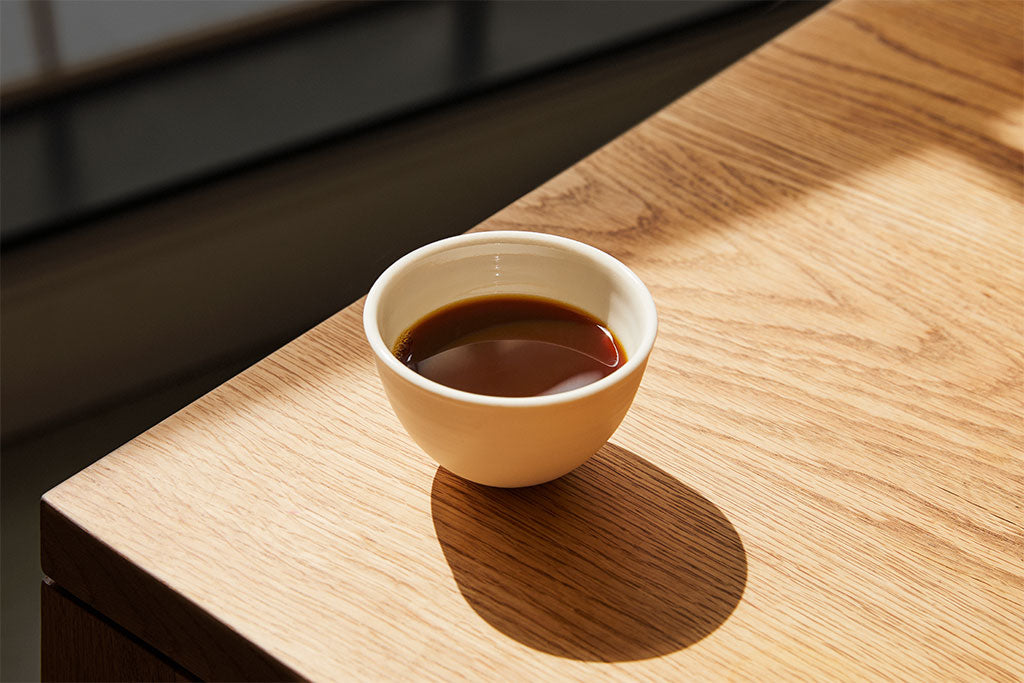How to train your palate - harnessing taste to impact flavour (part 2)

It’s easy to assume you understand taste, but do you really? Do you recognise the specific flavours and textures being perceived by your palate? And can you identify how these interact with each other to create the harmonious sensorial experience associated with great coffee?
By understanding how to recognise flavour and texture, will you develop the tools you need to make your coffee taste better and achieve your desired cup. In training your palate to identify wanted and unwanted qualities, you will be able to impact flavour quickly, accurately and with consistency.
In this second instalment of a series on understanding taste, we consider the terminology of taste and texture. Read part one here.
Acidity
Used to describe a sour taste sensation in coffee. Often mistaken for bitterness. Given sourness is a negative term when tasting coffee, the positive perception of acidity is usually labelled as ‘bright’. This refers to the intensity of the acidity, and the extent to which this is desired will depend on the coffee you’re brewing and the method used.
‘Bright’ acidity is desired if you’re using the pour over method to brew an inherently acidic coffee, but not if you’re using a milder coffee to pull espresso.
Bitterness
A taste attribute essential to the overall structure of brewed coffee but not pleasant if too prominent. Usually more present in darker roasts and in canephora (robusta) coffees.
Saltiness
It has been proposed that the saltiness of coffee increases as sourness increases, and that light-roasted arabica coffee is saltier than light-roasted canephora coffee. Often confused for bitterness.
Sweetness
While it’s accepted that sweetness in coffee is a cross-modal perception (i.e., perceived by both taste and smell), it is not fully understood.
Interestingly, none of the potentially sweet-tasting compounds in brewed coffee are present in perceptible concentrations, so the origin of sweetness remains undefined. Given coffee is full of sweet-smelling aromatics, it is thought that it's these that contribute to the perception of sweetness.
Umami
A savoury taste sometimes confused with salty. Often labelled as ‘meaty’. Not well understood but recognised as a common taste element of coffee.
Aftertaste
Facilitated by flavour compounds that stay on the tongue after coffee has been swallowed. Linked to the role of solids present in the brew - heavy-bodied coffees often have a prominent aftertaste.
Aroma
Made up of odour compounds associated with foods that can be found in brewed coffee. Notes of chocolate, nut and caramel are some of the most appreciated aromas traditionally associated with coffee.
Astringency
An undesirable quality in coffee, it relates to the sensation of dryness in the mouth. As with saltiness, it is often confused with bitterness.
Balance
Theoretically, a balanced cup is one in which the different sensory attributes interact with each other harmoniously. Though balance is subjective, we can objectively say that we don’t want one attribute to mask another.
For example, if a coffee is especially bright, it can mask sweetness. It’s important to remember balance should be aimed for within the expression of the coffee – a balanced washed Ethiopian will likely taste very different to a balanced natural Brazil.
Body
Body, facilitated by solids in the brew, is the main tactile expression of coffee and encompasses thickness and texture. The amount and composition of these solids are primarily dependent on the brew method – the pressure of espresso brewing uses energy to emulsify solids, creating crema, whereas filter brewing expedites thinner body.
Body is also affected by origin, genetics, processing, and roasting. Naturally-processed coffees tend to have thicker body than washed coffees, and the same is usually true for darker roasts versus lighter roasts.
Texture
How the coffee feels on the tongue. Less subjective than taste. More on this below.
Defining texture in coffee
Texture is as complex as flavour and has significant impact on our perception of taste. Just as the same coffee can present different flavours based on the brew method, the technique of the method, the age of the coffee, the water used and many more variables, this is also true for the texture of the brew.
We use 12 definitions to communicate the textural qualities of our coffees.
Creamy
Rich, round, buttery. Lingers long on the tongue.
Dense
Full-bodied and heavyweight. Envelops the palate.
Fresh
Light, bright, and refreshing. Floral, aromatic, and clean.
Juicy
Mouth-watering, with pronounced acidity.
Silky
Soft, gentle, indulgent. Swirls and slides across the tongue.
Smooth
Balanced, often with low acidity and a medium to full body.
Sticky
Sweet, lip-smacking, jammy. Is this coffee? Or dessert?
Syrupy
Weighty on the palate, glossy. Often notably sweet.
Tea-like
Light-bodied and delicate. Crisp, complex and clean.
Velvety
Soft, rich and sweet. Often full-bodied and with low acidity.
Viscous
Thick, with a full body and distinct sweetness.
Zingy
Lively, fresh and full of florals. Pronounced acidity.
Often, these textures aren’t independent of one another. It’s likely that a coffee that is tea-like will also exhibit a zingy texture, as both are associated with pronounced acidity. It’s also to be expected that a smooth coffee will often have a silky quality – both made possible by lower acidity and thicker body.
Achieving your desired cup
By understanding how to recognise flavour and texture, will you develop the tools you need to achieve your desired cup of coffee. In training your palate to identify wanted and unwanted qualities, you will be able to impact flavour quickly, accurately and with consistency.
While training your palate can appear overwhelming, it is fundamentally simple - you need to take care when brewing your coffee, and pay attention when you're tasting it. Do both of these and you'll be on your way to unlocking the full potential of your beans.




